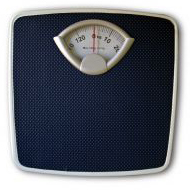 Are you still looking for that magic weight loss bullet? Deep down, you probably know you’re not going to find it. After all, weight loss is not rocket science, but it is hard work. It becomes even more difficult to shed the pounds as we get older and mentally, we just can’t focus. Here is a quick rundown of the most popular diets in America. It will give you something to take about in the break room, if nothing else.
Are you still looking for that magic weight loss bullet? Deep down, you probably know you’re not going to find it. After all, weight loss is not rocket science, but it is hard work. It becomes even more difficult to shed the pounds as we get older and mentally, we just can’t focus. Here is a quick rundown of the most popular diets in America. It will give you something to take about in the break room, if nothing else.
The Atkins Diet
What: This diet cuts down carbohydrates to 20 grams per day, allowing only non-starchy vegetables. Gradually, over time, you may increase your carb intake back to 50.
Pros: You can eat as much steak, eggs and cheese as you want and still lose weight. Generally, weight loss happens rather quickly and you have an arsenal of books, energy bars, and prepackaged food to choose from if you so desire.
Cons: The fatty foods you’re still consuming can lead to high cholesterol, kidney disease, type II diabetes, or heart disease. Furthermore, an insufficient amount of carbohydrates causes symptoms like constipation, muscle cramps, weakness, diarrhea, and fatigue.
The South Beach Diet
What: This diet also emphasizes protein, rather than carbohydrates. There are three phases, which gradually add more carbs back into your diet. Unlike Atkins, which cuts out all carbs, South Beach allows carbs that are low on the glycemic index (like whole grains).
Pros: You’re eating more lean meats, nuts and oily fish and less sugar. There are frozen entrees available for easy, quick consumption.
Cons: During Phase 1, your body’s electrolyte balance can be thrown off, which causes a huge loss of water weight, which could be unsafe. Also, the frozen dinners contain high amounts of sodium, which aren’t ideal for all patients.
The Zone Diet
What: You consume carbohydrates, protein and fat in a ratio of 40:30:30 respectively.
Pros: You’ve traded in that bacon and pepperoni for chicken and turkey, not to mention, you’re eating green veggies and fruits instead of potatoes and starches. You learn about portion size and don’t need to count calories. Complex carbs are included.
Cons: You cannot have any caffeine or alcohol (except for up to one glass of wine per day). It’s also not healthy to boost protein to 30% — beyond the health 15 to 20 percent – because the kidneys may become overly taxed. Additionally, no dietician would ever recommend dropping your calories below 1,200 a day.
The Cabbage Soup Diet
What: This fad diet claims to help you lose 7 to 11 pounds in one week by consuming only brown rice, bananas, fruit, milk, and cabbage soup.
Pros: It’s very cheap to follow, specific in what’s allowed, requires only one recipe, and promises to be a “quick fix.” You’ll be making a few healthier choices, as opposed to a sugary, refined food diet.
Cons: This weight loss plan is not sustainable and most of your weight loss will be in water weight. The soup itself is high in sodium, which is not good for people with heart conditions. Also, dieters report symptoms like headaches, weakness, bloating and flatulence because they are not getting adequate nutrition.
The Reduced Calorie Diet
What: You eat 1,200 calories per day instead of the usual 2,000, which allows for healthy weight loss of 1 to 2 pounds per week. Your meal plan might consist of a whole wheat English muffin with a tablespoon of peanut butter and half a banana for breakfast and three ounces of baked skinless chicken breast with one cup of cooked broccoli and two-thirds cup of brown rice for dinner. Your snacks will consist of a carb and a protein – like 20 almonds and an apple or 8 ounces of low-fat yogurt and two low-fat fig cookies.
Pros: You feel energized and satiated. You’ll notice lower triglycerides and cholesterol levels, improved memory and a lack of hunger cravings.
Cons: This diet is not recommended for pregnant or breast feeding women. Men and people who weigh more will need more calories to prevent starvation or nutrient deficiency.
The Mediterranean Diet
What: You trade in America’s fatty fried foods, grease, salt and sugar for the natural diet of the Mediterranean Isles – consuming more red wine, fish, whole grains, vegetables and olive oil.
Pros: This method promotes exercise and lifestyle change. The foods you eat are low in saturated fat and refined carbs and high in fiber and mono-unsaturated fat. This diet is associated with reduced mortality rates for heart attack survivors, reduced risk of diabetes, and reduced risk of Cancer, Parkinson’s and Alzheimer’s.
Cons: The flexibility of this diet may not have enough structure for everyone, although there are plenty of books out there. Also, if you’re active, you will need to add more protein than the diet typically recommends.
The Thrive Diet
What: This popular vegan diet is another type of “lifestyle choice” that helps you lose weight. According to the plan, 45% of your diet consists of fibrous vegetables like zucchini and cucumbers; 20% comes from seeds, beans and wild rice; 20% comes from fruit like apples and berries; 10% comes from nuts like cashews, avocados and oils; and 5% comes from whole grains and starchy vegetables like potatoes or squash.
Pros: You become more fit and exercise more often, as per the diet guidelines. You get rid of chemicals and begin to adopt a much more healthier way of thinking and eating.
Cons: There’s no caffeine, sugar, or meat. Dieters report cramping and gas at first because there is so much more fiber than the typical diet. Active athletes must monitor protein levels closely to be sure they’re high enough to meet the demands of their vigorous exercise routines.
 |
| Article: Jennn Fusion Twitter: @jennnfusion |

